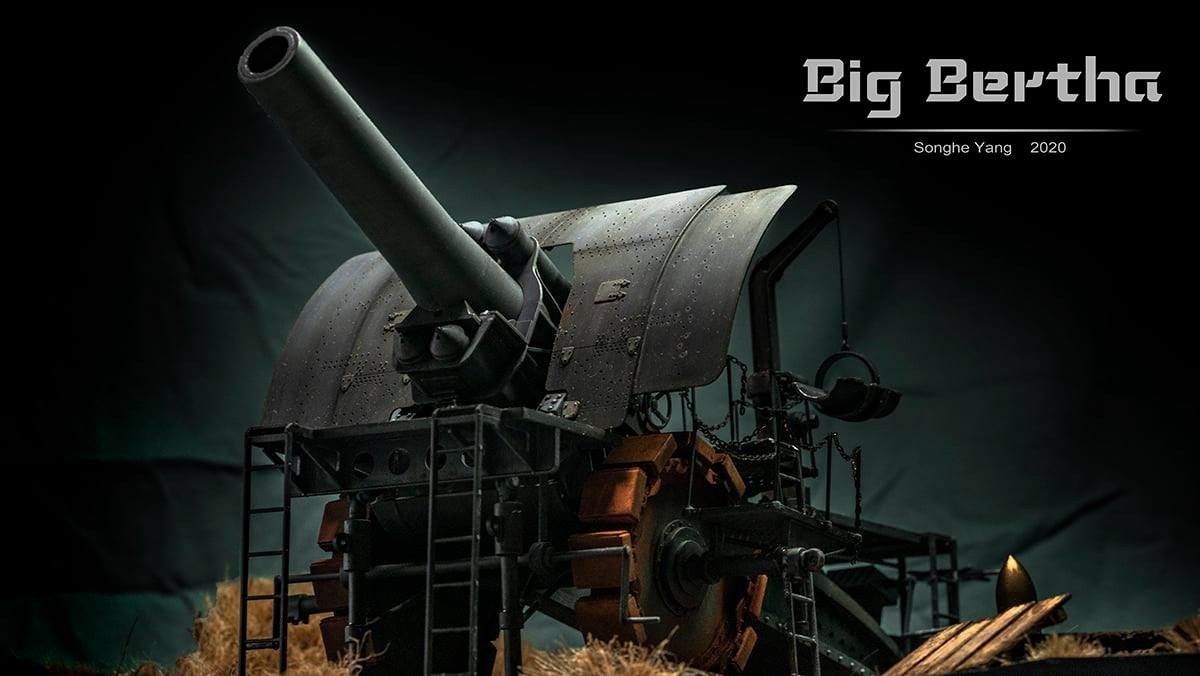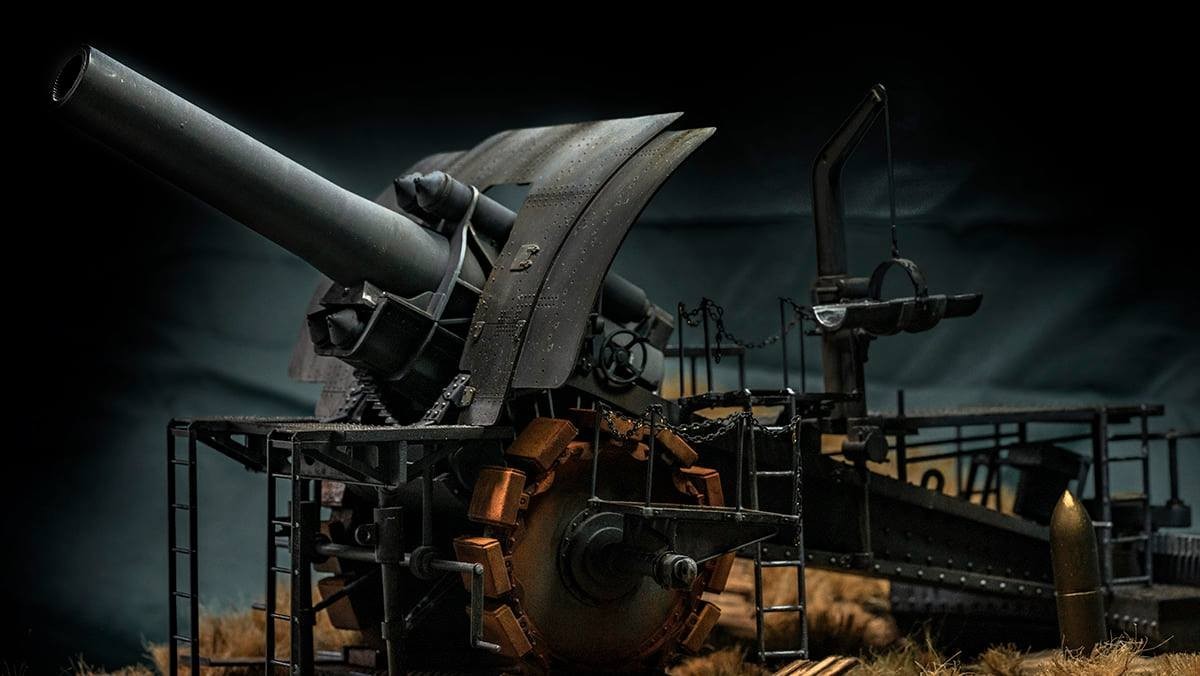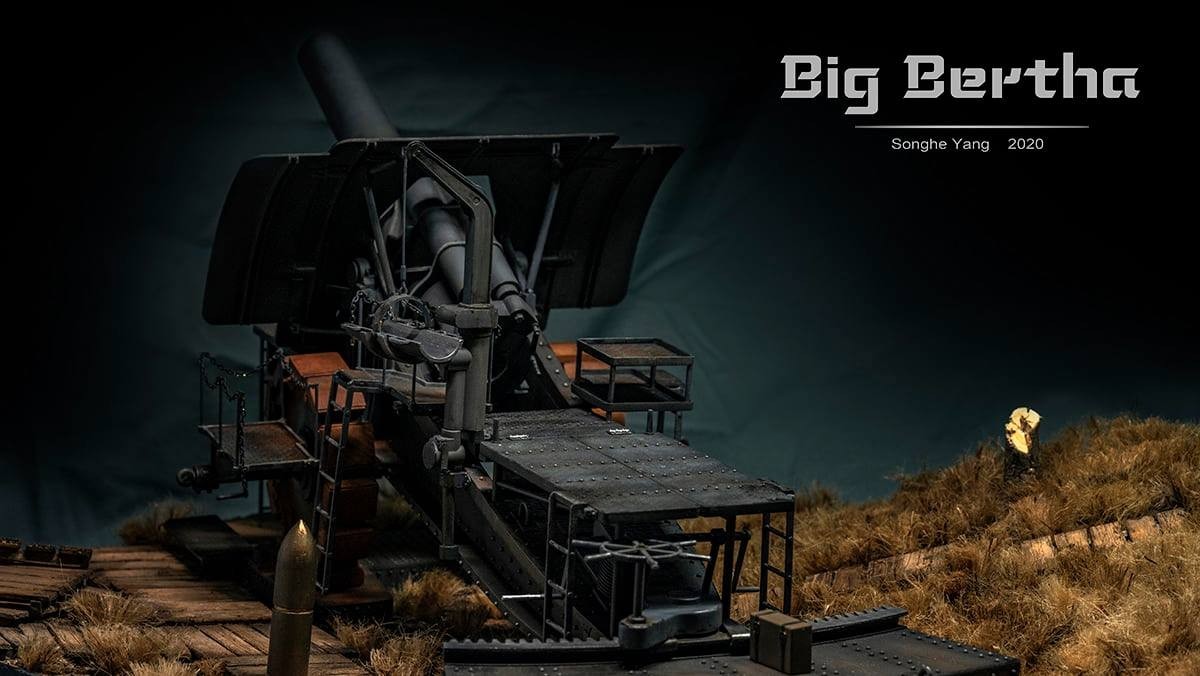The Krupp 420mm artillery gun Big Bertha the German Empire stunning build from modelling friend Songhe Yang
The 42 cm kurze Marinekanone 14 L/12 (short naval cannon), or Minenwerfer-Gerät (M-Gerät), popularly known by the nickname Big Bertha, was a German siege howitzer built by Krupp AG in Essen, Germany and fielded by the Imperial German Army from 1914 to 1918. The M-Gerät had a 42-centimetre (17 in) calibre barrel, making it one of the largest artillery pieces ever fielded. It was first designed in 1911 and entered production the next year. Test firing began in early 1914, and the gun was estimated to be finished by October. When World War I broke out, the two available M-Gerät guns, still prototypes, were sent to Liège and destroyed Forts Pontisse and Loncin. German soldiers bestowed the gun with the nickname "Big Bertha," which then spread through German newspapers to the Allies, who used it as a nickname for all super heavy German artillery. The Paris Gun, used in 1918 after all Big Berthas had been removed from service, has historically been confused for the M-Gerät.



